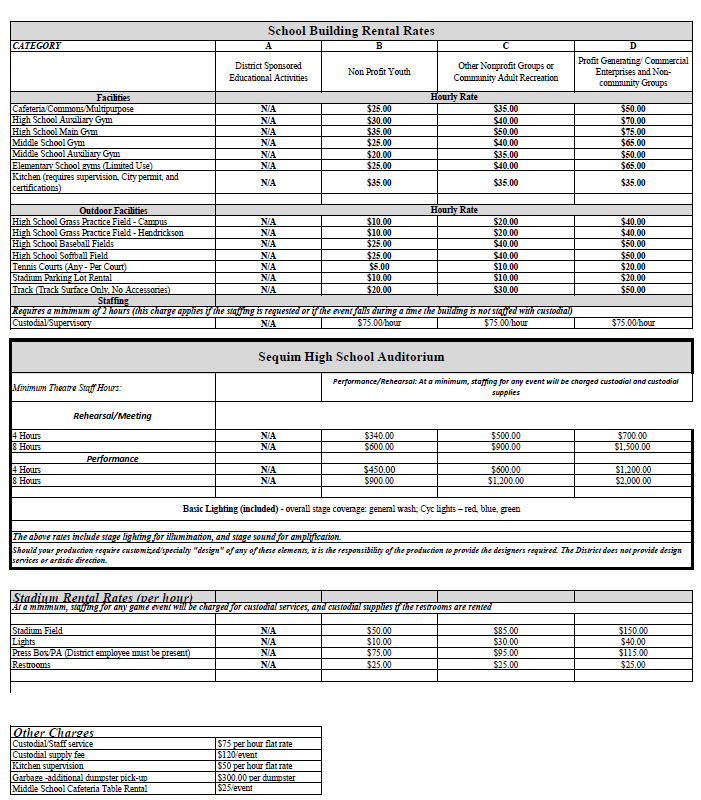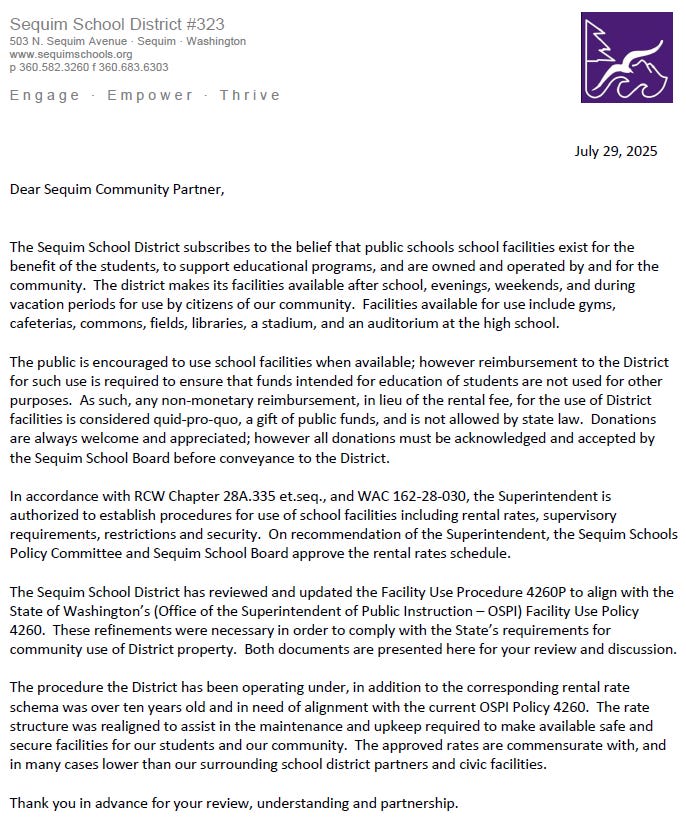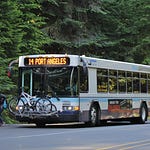Breaking: Charter Review Commission rejects Water Steward position amendment. Proposition will not be on the ballot.
Just months after Sequim voters approved a $149 million school bond, the school district is raising rental fees on community groups—making it nearly impossible for local youth sports and nonprofits to use the very facilities taxpayers just funded. Is this fiscal responsibility, or a betrayal of community trust?
Just three months ago, the Sequim community came together to pass a $36.2 million levy and $149.5 million school bond—an ambitious investment in the future of local education. With interest, the bond is projected to cost property owners nearly a quarter of a billion dollars over the next 20 years. It was a big ask, and voters stepped up.
Now, some community members are asking: is this how we’re thanked?
As the dust settles from the bond campaign, the Sequim School District has rolled out a newly revised schedule of facility rental fees—rates that many local residents and nonprofit organizations say could make it unaffordable for them to use the very facilities their tax dollars helped fund.
Youth programs feeling the strain
Local youth sports leagues appear to be among the first affected. Little league and youth football groups, which have long relied on school grounds for practices and games, are grappling with a wave of new charges that may push them out of the community altogether.
“The school district is going to begin charging the community’s youth sports nonprofits so much money that they will not be able to use the facilities,” one parent shared. “For example, they want to charge Little League $25 an hour per field, plus an hourly custodial fee, just to park in the lot and run practices. That adds up to hundreds of dollars per day.”
According to the updated facility use rates approved by the school board:
Baseball and softball fields now carry a $25/hour fee for nonprofit youth use.
Custodial staffing is billed at $75/hour, with a $120 custodial supply fee per event.
Parking lot use and restroom access come with additional charges.
Youth football programs report facing similar costs—and are now considering relocating practices and games to Port Angeles, where facility access has historically been more affordable and supportive.
Facilities sitting empty—but costly to use
The updated rental structure doesn’t just affect youth sports. It applies to any organization—nonprofit or otherwise—looking to use district property outside school hours. That includes gyms, cafeterias, auditoriums, and outdoor fields.
Hosting a job fair, community home show, or college expo? Here’s a sample of what it could cost under the new schedule:
High School Gym: $35 to $50 per hour
Cafeteria or Commons: $25 to $50 per hour
Stadium field: $50 per hour, plus $10 for lights, $25 for restrooms, and $75/hour for required staff
Theater productions: Minimum charges ranging from $450 to $900, depending on duration
In short, even modest events could incur costs in the hundreds—if not thousands—of dollars.
While the district is within its rights to recover operational costs, many residents are asking whether these rates truly reflect community partnership, especially in light of the recent bond approval.
District response: legal and policy compliance
In a letter dated July 29, 2025, the Sequim School District explained that these changes were prompted by a need to align with the state’s updated policy (OSPI Policy 4260) on facility use. The previous rate schedule was more than a decade old, and district officials say the new fees help fund necessary upkeep and ensure student-focused resources are not diverted.
The letter also notes that any in-kind contributions—such as volunteer hours in lieu of payment—are prohibited under Washington’s prohibition on “gifts of public funds.”
The district maintains that its rates are “commensurate with, and in many cases lower than, our surrounding school district partners and civic facilities.”
Balancing fiscal responsibility and community access
There’s no question that maintaining public facilities comes at a cost. But many Sequim residents are left wondering if this new structure strikes the right balance between fiscal responsibility and genuine community engagement.
After all, the people of Sequim just committed to one of the largest local bond packages in decades. Community members are not asking to use school grounds for free—but they are hoping for a model that acknowledges their support and makes it possible for local kids and civic groups to stay active, connected, and rooted in their own hometown.
It’s one thing to recoup cleaning costs. It’s another to price out the very families who made these facilities possible.
As youth programs look elsewhere for space, and local organizations reconsider hosting events, perhaps it’s time for the district and community to sit down together once more—and find a way to keep these spaces open, accessible, and truly community-driven.
Community spotlight
The Quillayute Valley Park and Recreation District (QVPRD) will hold a public hearing to discuss the future of the community pool, park services, and related programs. Years after previous tax support expired, the district is evaluating how to move forward—and community input is essential.
🗓 Public Hearing & Special Meeting
📍 Community Room – 91 Maple Avenue (Inside the Pool Building)
🕙 Wednesday, July 30, 2025 – 10:00 AM
Whether you swim at the pool, use the community room, rely on services, or hope for new youth programs—this is your chance to weigh in.
Bring your voice. Help shape what comes next.













